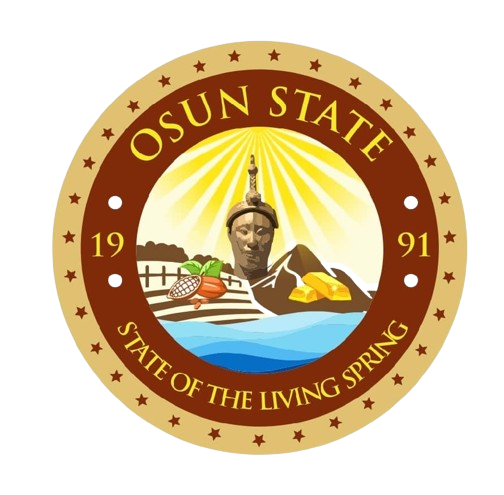Total
Area
People in
the town
Elevation
Ile-Ife, Osun
Ilé-Ifẹ̀ is an ancient Yoruba city in south-western Nigeria. The city is located in present-day Osun State with a population of over 500,000 people, which is the highest in Osun State according to population census of 2006.
According to the traditions of the Yoruba religion, Ilé Ifè was founded by the order of the Supreme God Olodumare by Obatala. It then fell into the hands of his brother Oduduwa, which created enmity between the two. Oduduwa created a dynasty there, and sons and daughters of this dynasty became rulers of many other kingdoms in Yorubaland. The first Oòni of Ife is a descendant of Oduduwa, which was the 401st Orisha. The present ruler since 2015 is Oba Adeyeye Enitan Ogunwusi Ojaja II, Ooni of Ife who is also a Nigerian accountant. Named as the city of 401 deities, Ife is home to many worshippers of these deities and is where they are routinely celebrated through festivals.
Ilé-Ifẹ̀ is famous worldwide for its ancient and naturalistic bronze, stone and terracotta sculptures, dating back to between 1200 and 1400 CE.
Brief history of Ile-Ife
According to Yoruba religion, Olodumare, the Supreme God, ordered Obatala to create the earth, but on his way he found palm wine which he drank and became intoxicated. Therefore, the younger brother of the latter, Oduduwa, took the three items of creation from him, climbed down from the heavens on a chain and threw a handful of earth on the primordial ocean, then put a cockerel on it so that it would scatter the earth, thus creating the land on which Ile Ife would be built. Oduduwa planted a palm nut in a hole in the newly formed land and from there sprang a great tree with sixteen branches, a symbolic representation of the clans of the early Ife city-state. The usurpation of creation, by Oduduwa, gave rise to the ever-lasting conflict between him and his elder brother Obatala, which is still re-enacted in the modern era by the cult groups of the two clans during the Itapa New Year festival. On account of his creation of the world, Oduduwa became the ancestor of the first divine king of the Yoruba, while Obatala is believed to have created the first Yoruba people out of clay.

The meaning of the word “ife” in Yoruba is “expansion”; “Ile-Ife” is therefore in reference to the myth of origin as “The Land of Expansion” (the word, Ile, as pronounced in modern Yoruba language, means house or home, which could make the name of the town mean “The House of Expansion”).
Traditional Settings
The Oòni (or king) of Ife is a descendant of the godking Oduduwa, and is counted first among the Yoruba kings. He is traditionally considered the 401st spirit (Orisha), the only one that speaks. In fact, the royal dynasty of Ife traces its origin back to the founding of the city more than ten thousand years before the birth of Jesus Christ. The present ruler is Oba Enitan Adeyeye Ogunwusi (Ojaja II). The Ooni ascended his throne in 2015. Following the formation of the Yoruba Orisha Congress in 1986, the Ooni acquired an international status the likes of which the holders of his title hadn’t had since the city’s colonisation by the British. Nationally he had always been prominent amongst the Federal Republic of Nigeria’s company of royal Obas, being regarded as the chief priest and custodian of the holy city of all the Yorubas. In former times, the palace of the Ooni of Ife was a structure built of authentic enameled bricks, decorated with artistic porcelain tiles and all sorts of ornaments.[9] At present, it is a more modern series of buildings. The current Ooni, Oba Adeyeye Enitan Ogunwusi Ojaja II, Ooni of Ife, is a Nigerian accountant and the 51st Ooni of Ife. He succeeded the late Oba Okunade Sijuwade(Olubuse II) who was the 50th ooni of Ife, and who had died on July 28, 2015.
Shrines, altars, and temples
Igbo Olokun: Igbo Olokun used to be a forested, sacred grove (igbo) that housed shrines at which the goddess Olokun was worshipped. Igbo Olokun in the city of Ile-Ife, in south-western Nigeria, was said to have a history of glass makers with unique manufacturing techniques in West Africa. The recovery of glass beads and associated production materials were found there during excavation. Analysis of the composition of the artefacts and preliminary dating of the site, which puts the main timing of glass-working between the 11th and 15th centuries AD. The results of these studies suggest that glass bead manufacture at this site was largely independent of glass-making traditions documented farther afield, and that Igbo Olokun may represent one of the earliest known glass-production workshops in West Africa. The location is not divulged except on request and permission of the keepers of the shrine because it is a sacred grove.
Oduduwa Shrine and Grove: The shrine of the progenitor of the Yoruba race. Worshippers and initiates flood the place seeking blessings and pay obeisance to the originator of their civilization.
Agbonniregun Temple: The grove of Ọrunmila an Orisha. He is the Orisha of wisdom, knowledge, and divination. This source of knowledge is believed to have a keen understanding of the human form and of purity, and is therefore praised as often being more effective than other remedies.
Archaeology
Solomon’s knot, a quasi-heraldic symbol of Yoruba royalty.
Burnt pipes (or tuyere), stone tools, broken calabash, decorated potsherds, and pottery (e.g., rimsherd, plane-sherd body, broken, and washed pottery) were excavated at Iyekere.[citation needed] Iron smelting, charcoal utilized in the process of smelting, and iron slags involved in pitting were also discovered.[citation needed]
Iron smelting occurred in the Ife region. The yield and efficiency were quite high as the iron smelting process yielded ore grade near 80 percent iron oxide, lean slag possessed less than 60 percent iron oxide, and no greater than the required amount of iron oxide in the slag was left for slag formation. While more excavation is needed to produce a more accurate estimate for the age of the smelting site, it can be approximated to likely being precolonial, during the Late Iron Age.
Igbo Olokun, also known as Olokun Grove, may be one of the earliest workshops for producing glass in West Africa. Glass production may have begun during, if not before, the 11th century.[16] The 11th – 15th century were the peak of glass production.[16] High lime, high alumina (HLHA) and low lime, high alumina (LLHA) glass are distinct compositions that were developed using locally sourced recipes, raw materials, and pyrotechnology. The presence of HLHA glass beads discovered throughout West Africa (e.g., Igbo-Ukwu in southern Nigeria, Gao and Essouk in Mali, and Kissi in Burkina Faso), after the ninth century CE, reveals the broader importance of this glass industry in the region and shows its participation in regional trade networks (e.g., trans-Saharan trade, trans-Atlantic trade). Glass beads served as “the currency for negotiating political power, economic relations, and cultural/spiritual values” for “Yoruba, West Africans, and the African diaspora.”
In Osun Grove, the distinct glassmaking technology produced by the Yoruba persisted into the seventeenth century.
Government
The main city of Ife is divided into two local government areas: Ife East, headquartered at Oke-ogbo and Ife central at Ajebandele area of the city. Both local governments are composed of a total of 21 political wards. The city has an estimated population of 355,813 people.
Economy
Ife contains universities that are very well known in Nigeria and internationally such as Obafemi Awolowo University formerly University of Ife and Oduduwa University. It also contains attractions like the Natural History Museum of Nigeria. Ife is home to a regional agricultural center with an area that produces vegetables, grain cocoa, tobacco, and cotton. Ife has a few open markets, such as Oja Titun or Odo-gbe market with about 1,500 shops.
In terms of development, the Ife central area of Ilé Ifè is more developed. The areas include Parakin, Eleyele, Modomo, Damico, and Crown Estate Area. These areas are characterized by modern houses, good road network, constant electricity and security.

